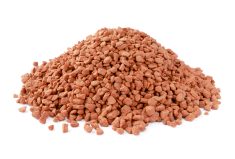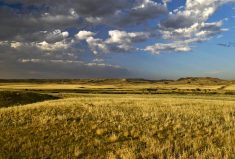Human activities such as marsh draining for agriculture and logging are increasingly eating away at saltwater and freshwater wetlands that cover only one per cent of Earth’s surface but store more than 20 per cent of all the climate-warming carbon dioxide absorbed by ecosystems worldwide.
A new study published May 6 in Science by a team of Dutch, American and German scientists shows that it’s not too late to reverse the losses.
Read Also

Local farm businesses, groups look forward to Manitoba Ag Days 2026
Most of agriculture is seemingly at Manitoba Ag Days each January: Manitoba agribusinesses and farm groups look forward to connecting with farmers at the 2026 show.
The key to success, the paper’s authors say, is using innovative restoration practices — identified in the new paper — that replicate natural landscape-building processes and enhance the restored wetlands’ carbon-storing potential.
And doing it on a large scale.
“About one per cent of the world’s wetlands are being lost each year to pollution or marsh draining for agriculture, development and other human activities,” said Brian R. Silliman, Rachel Carson Distinguished Professor of Marine Conservation Biology at Duke University, who co-authored the study.
“Once disturbed, these wetlands release enormous amounts of CO2 from their soils, accounting for about five per cent of global CO2 emissions annually,” Silliman said. “Hundreds, even thousands of years of stored carbon are exposed to air and start to rapidly decompose and release greenhouse gases. The result is an invisible reverse waterfall of CO2 draining into the atmosphere. The wetlands switch from being carbon sinks to sources.
“The good news is, we now know how to restore these wetlands at a scale that was never before possible and in a way that both stops this release of carbon and re-establishes the wetland’s carbon-storing capacity,” he said.
What makes most wetlands so effective at carbon storage is that they are formed and held together by plants that grow close to each other, Silliman explained. Their dense above- and below-ground mats of stems and roots trap nutrient-rich debris and defend the soil against erosion or drying out — all of which helps the plants to grow better and the soil layer to build up, locking in a lot more CO2 in the process.
Successful restorations must replicate these processes, he said.
“More than half of all wetland restorations fail because the landscape-forming properties of the plants are insufficiently taken into account,” said study co-author Tjisse van der Heide of the Royal Institute for Sea Research and the University of Groningen in the Netherlands. Planting seedlings and plugs in orderly rows equidistant from each other may seem logical, but it’s counterproductive, he said.
“Restoration is much more successful when the plants are placed in large, dense clumps, when their landscape-forming properties are mimicked, or simply when very large areas are restored in one go,” van der Heide said.
“Following this guidance will allow us to restore lost wetlands at a much larger scale and increase the odds that they will thrive and continue to store carbon and perform other vital ecosystem services for years to come,” Silliman said. “The plants win, the planet wins, we all win.”















